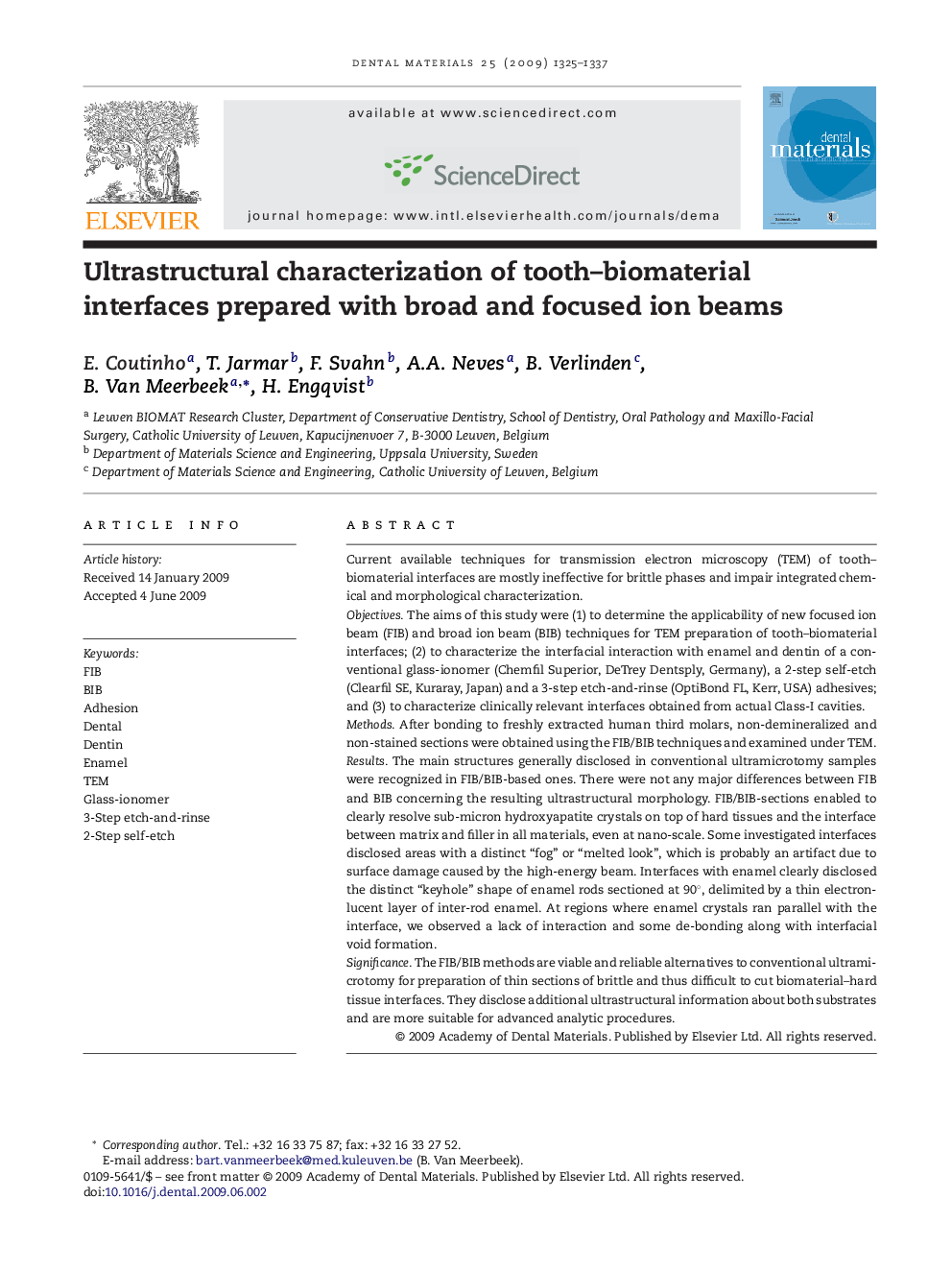| Article ID | Journal | Published Year | Pages | File Type |
|---|---|---|---|---|
| 1422932 | Dental Materials | 2009 | 13 Pages |
Current available techniques for transmission electron microscopy (TEM) of tooth–biomaterial interfaces are mostly ineffective for brittle phases and impair integrated chemical and morphological characterization.ObjectivesThe aims of this study were (1) to determine the applicability of new focused ion beam (FIB) and broad ion beam (BIB) techniques for TEM preparation of tooth–biomaterial interfaces; (2) to characterize the interfacial interaction with enamel and dentin of a conventional glass-ionomer (Chemfil Superior, DeTrey Dentsply, Germany), a 2-step self-etch (Clearfil SE, Kuraray, Japan) and a 3-step etch-and-rinse (OptiBond FL, Kerr, USA) adhesives; and (3) to characterize clinically relevant interfaces obtained from actual Class-I cavities.MethodsAfter bonding to freshly extracted human third molars, non-demineralized and non-stained sections were obtained using the FIB/BIB techniques and examined under TEM.ResultsThe main structures generally disclosed in conventional ultramicrotomy samples were recognized in FIB/BIB-based ones. There were not any major differences between FIB and BIB concerning the resulting ultrastructural morphology. FIB/BIB-sections enabled to clearly resolve sub-micron hydroxyapatite crystals on top of hard tissues and the interface between matrix and filler in all materials, even at nano-scale. Some investigated interfaces disclosed areas with a distinct “fog” or “melted look”, which is probably an artifact due to surface damage caused by the high-energy beam. Interfaces with enamel clearly disclosed the distinct “keyhole” shape of enamel rods sectioned at 90°, delimited by a thin electron-lucent layer of inter-rod enamel. At regions where enamel crystals ran parallel with the interface, we observed a lack of interaction and some de-bonding along with interfacial void formation.SignificanceThe FIB/BIB methods are viable and reliable alternatives to conventional ultramicrotomy for preparation of thin sections of brittle and thus difficult to cut biomaterial–hard tissue interfaces. They disclose additional ultrastructural information about both substrates and are more suitable for advanced analytic procedures.
